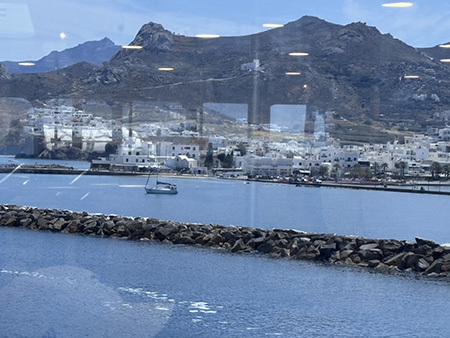This post originally appeared on Murder Is Everywhere.
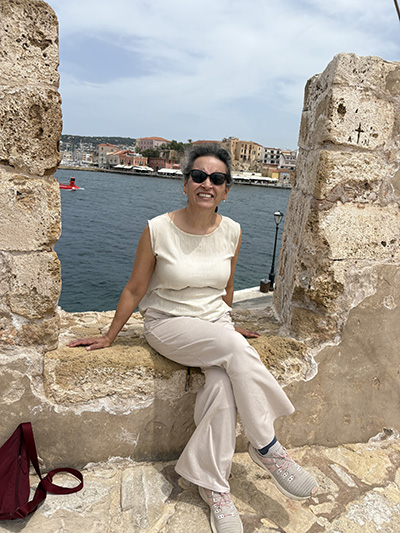
Our trip to Greece was impulsive.
Let’s go! I said to Tony, my husband and frequent travel mate. Let’s go to the islands again.
I’d made the same suggestion 35 years ago. We were former college classmates whose deep friendship was becoming a fledgling romance. A two-week trip was a celebration of Tony’s medical school graduation—and also a special time for our budding romance.
I researched the islands that were supposed to be high in beauty and lower on tourist kitsch. I bought reasonable tickets from a travel agent. Tony applied for his first passport and gamely agreed to the islands I’d selected: Sifnos, Naxos and Santorini.
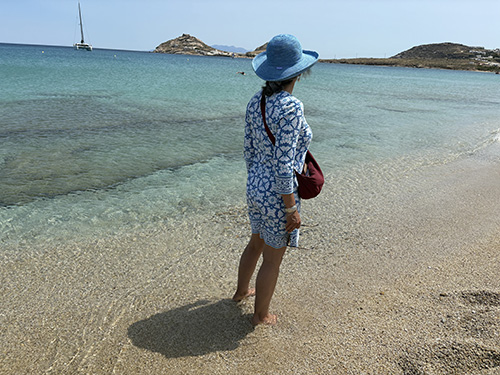
Greece in the spring of 1990 had just a sprinkling of European tourists, excepting, of course, Santorini. Overall, in the three places, we recall the kindness of the people, the grandeur of the mountains and azure sea, the crispness of the salads and the sweetness of the honey.
What nobody could have expected were the inevitable travel hiccups. Episodes like getting off a ferry to wait on the dark, early hours on Sifnos beach; arriving in our swimsuits at water too cool to swim in; Tony’s ankle sprain on the erratic staircases of Naxos, and my full-throttle sickness traveling on a hydrofoil. Tony was the one who held the bag. And the genius of these troubles were how they proved we could work together even through embarrassment and pain. The relationship was sailing ahead! A year later, we married.
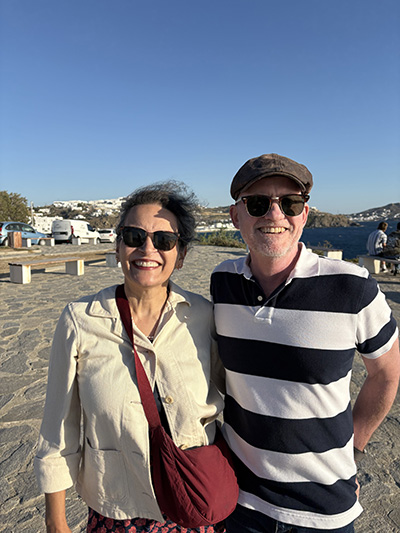
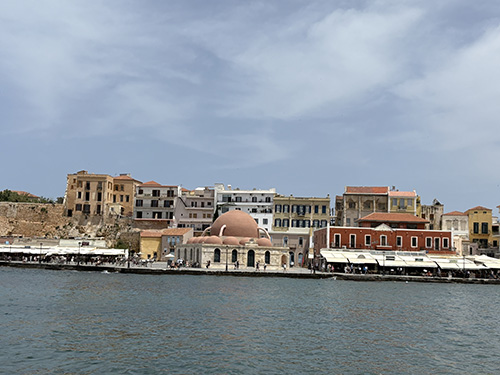
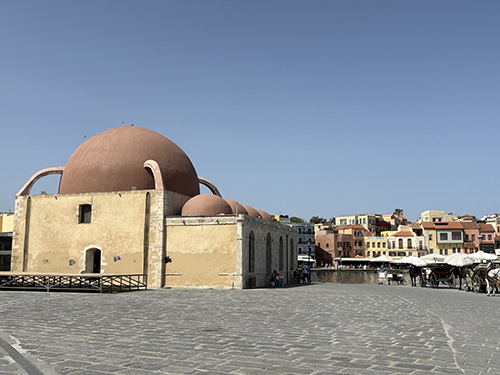
This year, as news about the difficulties of airport exit and entry spread, I felt urgently that I still wanted to travel—to be free in the world. Having already been in India, I felt the European Union countries calling. And I remembered the birthplace of my lasting love: the Greek islands.
Once again, I was the primary trip planner, and with over 240 inhabited Greek islands, there was a lot left to see. I landed on Crete, Greece’s largest island, with many places to go and a distinctive cuisine; Syros, the longtime legislative capital of the Cyclades, a marvel of marble sidewalks and grand Venetian style houses; and Mykonos, an international party hub truly chose only because it’s a seasonal home of my dear friends Jeff and Barbara Siger.
Even though we are older and wiser, we still had a big travel snafu. Hiccup One was arriving in the charming and small Chania, Crete airport on a British Airways flight that hadn’t loaded our luggage at Heathrow. We were in Chania two-and-a-half days without suitcases .
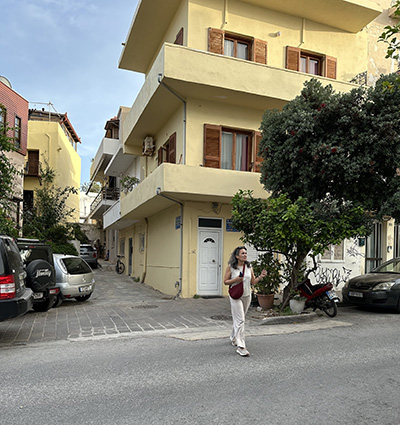
Our historic Airbnb, Casa Regina Luxury House, was in a tiny lane and wasn’t an easy delivery address, so it was only thanks to our kind landlady calling the airport that our clothes were ultimately delivered. In the meantime, we washed our travel clothing, and I bought a linen dress at a shop in Chania’s Oldtown to feel more culturally appropriate for visiting monasteries. The two monasteries we visited, Moni Ayia Triadha near Chania, and Moni Arkadhi near Rethymno, were remote, uncrowded sanctuaries.
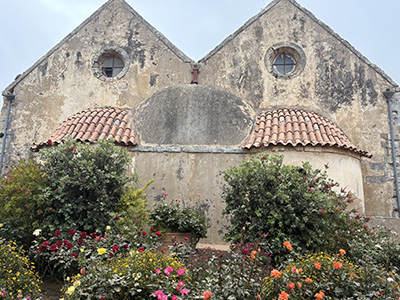
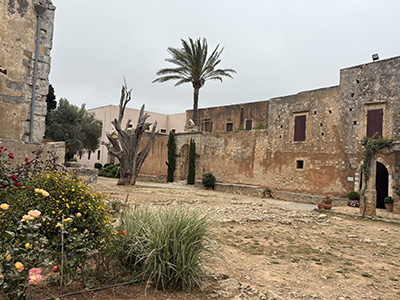
Ayia Triadha is still inhabited and has lovely gardens and produces its own olive oil and wines. Arkhadi dating to around 1100 AD is preserved clearly as a museum. The monastery was famous in the 17th and 18th centuries for exquisite goldwork embroidery and manuscript copying. It is best known as a holocaust setting in 1866, when 966 Cretan Christians came to stay with the monks to themselves during the period of Ottoman Turkish reign. A fierce battle attack from soldiers led not only to deaths by gunfire, but also of self-immolation in the compound’s powder keg. The treasures and tragedy are both brought forward in the tranquil location.
We rented a small car—and driving to this monastery, and then bringing the car through a medieval town to park, was very hard. I’d label driving Hiccup Number Two, and Tony was gracious enough to handle all of it!
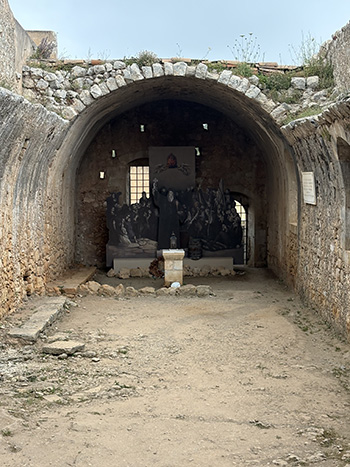
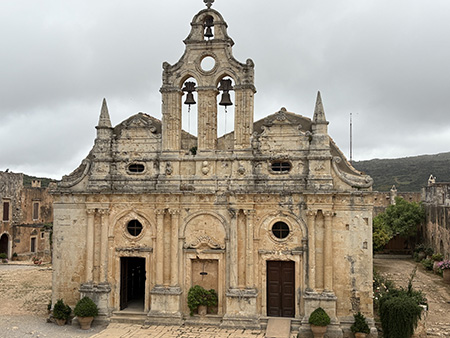

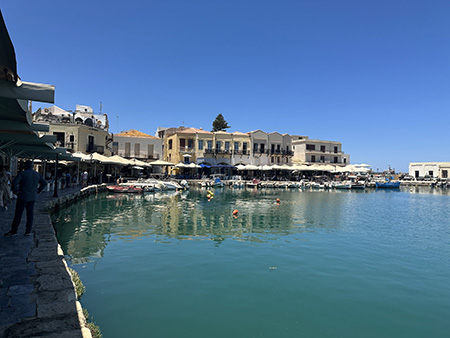
Next stop: another of Crete’s medieval Venetian-Ottan towns, Rethymno.
Rethymno was slightly less crowded with tourists than Chania. It has a similar Oldtown to Chania marked by winding lanes and picturesque narrow houses. Here, many local people lived in these homes, and while tourism employs some citizens, the majority are involved in other work. We noticed a strong emphasis on restaurants serving locally sourced food and “Creative Cretan Cuisine.” A very good omen!
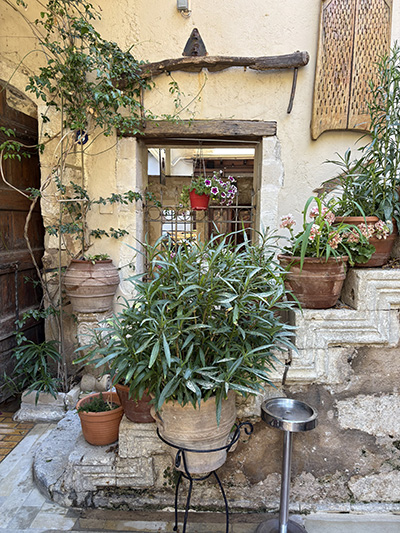
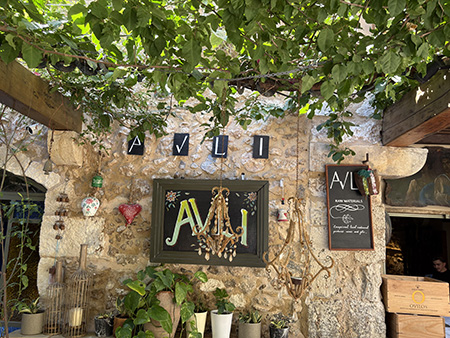
We hit gold with our small hotel, Avli, located on a tiny lane in an 18th century palazzo with a courtyard garden restaurant. Our small boutique hotel was quiet at night and gave us the pleasure of feeling like we were in a neighborhood with people of all ages, going about with their everyday lives.
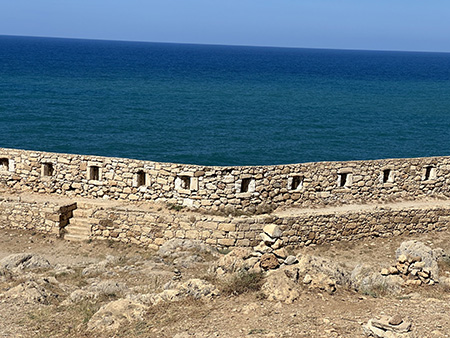
The big historic site in Rethymno is a Venetian-built fort known as the Forteza. Its walls were too low to serve as much of a stronghold against the Egyptian pirates and later-arriving Turks. Chiefly, Forteza was a location for Venetian administrators to live and work, while native Cretans preferred to build houses lower down in the city. We were impressed by the finely woven textiles, basketwork, ceramics and wood and stonework at the Historical and Folklore Museum in Oldtown.
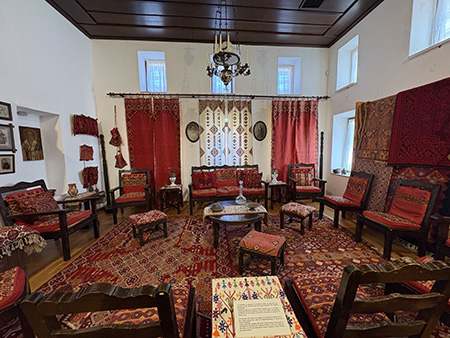
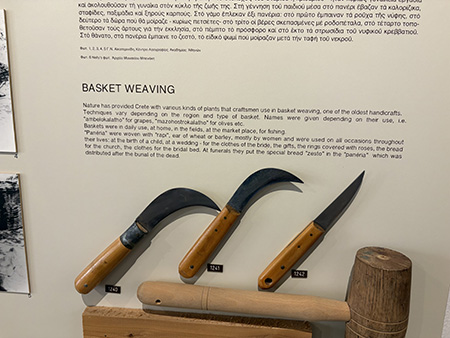
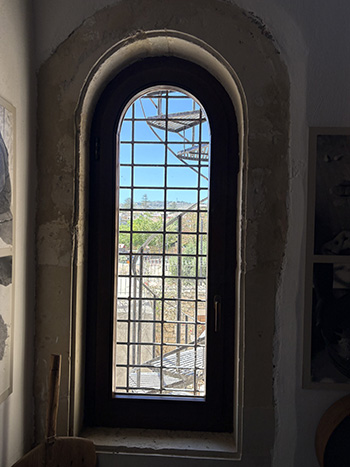
This small and special museum was created by local family donations, just like a wonderful small museum we found in a historic house in Gavalochori, a village in the Apokouronas area near Chania.
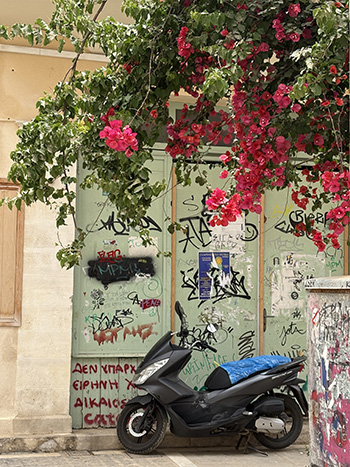
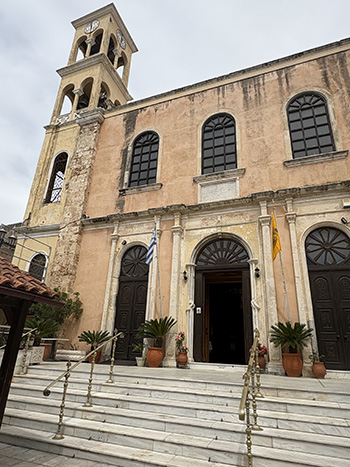
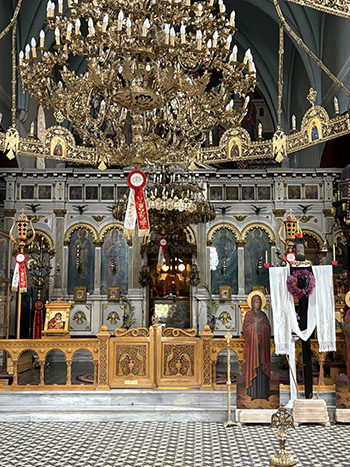
During our time in Crete, I pondered over something with Tony. I know that I especially enjoy places that are beautiful and retain history. I love planning for these places and will read about them ahead of time. I know just a few words of the Greek language, which makes me dependent on local people speaking a bit of my language when I get there. I hope to visit “friendly” places, with locals not being angry about the disruption of foreigners. Such a welcome is the essence of being a tourist. Yet at the same time, I carry a secret wish not to want to see that many other outsiders around us in the streets. And what an impossibility it is to hold both things—but it did happen in some places on this trip.
We had a strong feeling of gratitude to the land and people of Crete when we boarded a Seajets Ferry early on a Wednesday morning, heading for Island Number Two: Syros.
